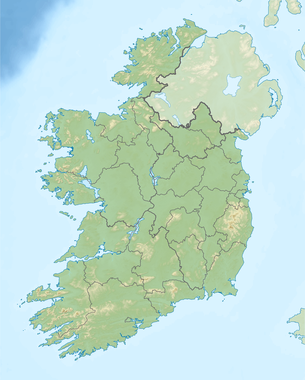사지타리1 치
Chi1 Sagittarii| 관측 데이터 Epoch J2000.0 이쿼녹스 J2000.0(ICRS) | |
|---|---|
| 별자리 | 궁수자리 |
| 우측 상승 | 19h 25m 16.49013s[1] |
| 탈위임 | −24° 30′ 30.8599″[1] |
| 겉보기 크기 (V) | +5.03[2] |
| 특성. | |
| 스펙트럼형 | A3/5 IV/V[3] |
| B-V색지수 | +0.23[2] |
| 아스트로메트리 | |
| 방사 속도 (Rv) | -43.4±1.6km[4]/s |
| 고유 운동 (μ) | RA: +61.63[1]mas/yr Dec.: −50.66[1]mas/yr |
| 시차 (π) | 12.95 ± 0.50[1] 마스 |
| 거리 | 252 ± 10 리 (77 ± 3 pc) |
| 절대치수 (MV) | +0.59[5] |
| 궤도[6] | |
| 기간 (P) | 5.72 yr |
| 반주축 (a) | 0.069″ |
| 편심성 (e) | 0.710 |
| 기울기 (i) | 97.3° |
| 노드의 경도 (Ω) | 259.0° |
| 페리아스트론 신기원을 이루다 (T) | 1984.29 |
| 페리아스트론의 인수 (ω) (2차) | 10.7° |
| 세부 사항 | |
| 치1 스그 A | |
| 미사 | 1.64[7] M☉ |
| 루미도 | 42.9[8] L☉ |
| 표면 중력 (log g) | 4.15[7] cgs |
| 온도 | 7,859±267[7] K |
| 회전 속도 (v sin i) | 54km[9]/s |
| 나이 | 393[7] 마이어 |
| 기타 지정 | |
| 데이터베이스 참조 | |
| 심바드 | 자료 |
치 사지타리(Chi1 Sagittarii, χ1 Sagittarii)는 사지타리우스 별자리에 있는 이항성계다[6].이 쌍은 육안으로 볼 수 있을 만큼 밝은 +5.03의 겉보기 크기를 가지고 있다.[2]지구에서 볼 수 있는 12.95마스의 연간 시차 변화를 바탕으로 태양으로부터 약 252광년 떨어진 곳에 위치한다.[1]방사상 속도 -43.4km/s로 지구의 일반적인 방향으로 우주를 통과하여 전진하고 있다.[4]
이것은 궤도 주기가 5.72년, 편심도가 0.710년, 각도가 69 mas인 시각적 이진법이다.1차 성분 A는 A3/5 IV/V의 항성 분류와 일치하는 혼합 스펙트럼을 보여주는 A형 항성이다.[3]헬무트 아벳은 그것을 스펙트럼 타입 kA5hF0VmF0을 가진 암별으로 분류했다.[11]이 표기법은 A5별의 칼슘 K선과 F0별의 수소와 금속선을 가지고 있음을 나타낸다.약 3억 9천[7] 3백만 년 전의 것으로, 54 km/s의 예상 회전 속도로 회전하고 있다.[9]이 별은 태양 질량의[7] 1.6배로 추정되며 광구에서 태양의 42.9배인[8] 광도를 7,859K의 유효 온도로 방출하고 있다.[7]
참조
- ^ a b c d e f van Leeuwen, F. (2007), "Validation of the new Hipparcos reduction", Astronomy and Astrophysics, 474 (2): 653–664, arXiv:0708.1752, Bibcode:2007A&A...474..653V, doi:10.1051/0004-6361:20078357, S2CID 18759600.
- ^ a b c Nicolet, B. (1978), "Photoelectric photometric Catalogue of homogeneous measurements in the UBV System", Astronomy and Astrophysics Supplement Series, 34: 1–49, Bibcode:1978A&AS...34....1N.
- ^ a b Houk, Nancy; Smith-Moore, M. (1978), Michigan catalogue of two-dimensional spectral types for the HD stars, vol. 4, Ann Arbor: Dept. of Astronomy, University of Michigan, Bibcode:1988mcts.book.....H.
- ^ a b Kharchenko, N. V.; et al. (2007), "Astrophysical supplements to the ASCC-2.5: Ia. Radial velocities of ˜55000 stars and mean radial velocities of 516 Galactic open clusters and associations", Astronomische Nachrichten, 328 (9): 889–896, arXiv:0705.0878, Bibcode:2007AN....328..889K, doi:10.1002/asna.200710776, S2CID 119323941.
- ^ Anderson, E.; Francis, Ch. (2012), "XHIP: An extended hipparcos compilation", Astronomy Letters, 38 (5): 331, arXiv:1108.4971, Bibcode:2012AstL...38..331A, doi:10.1134/S1063773712050015, S2CID 119257644.
- ^ a b "Sixth Catalog of Orbits of Visual Binary Stars". United States Naval Observatory. April 25, 2016. Retrieved 20 June 2017.
- ^ a b c d e f g David, Trevor J.; Hillenbrand, Lynne A. (2015), "The Ages of Early-Type Stars: Strömgren Photometric Methods Calibrated, Validated, Tested, and Applied to Hosts and Prospective Hosts of Directly Imaged Exoplanets", The Astrophysical Journal, 804 (2): 146, arXiv:1501.03154, Bibcode:2015ApJ...804..146D, doi:10.1088/0004-637X/804/2/146, S2CID 33401607.
- ^ a b McDonald, I.; et al. (2012), "Fundamental Parameters and Infrared Excesses of Hipparcos Stars", Monthly Notices of the Royal Astronomical Society, 427 (1): 343–57, arXiv:1208.2037, Bibcode:2012MNRAS.427..343M, doi:10.1111/j.1365-2966.2012.21873.x, S2CID 118665352.
- ^ a b Royer, F.; et al. (February 2007), "Rotational velocities of A-type stars. III. Velocity distributions", Astronomy and Astrophysics, 463 (2): 671–682, arXiv:astro-ph/0610785, Bibcode:2007A&A...463..671R, doi:10.1051/0004-6361:20065224, S2CID 18475298.
- ^ "chi01 Sgr". SIMBAD. Centre de données astronomiques de Strasbourg. Retrieved 2017-07-05.
{{cite web}}: CS1 maint : 포스트스크립트(링크) - ^ Abt, H. A. (March 1981), "Visual multiples. VII - MK classifications", Astrophysical Journal Supplement Series, 45: 437–456, Bibcode:1981ApJS...45..437A, doi:10.1086/190719.


